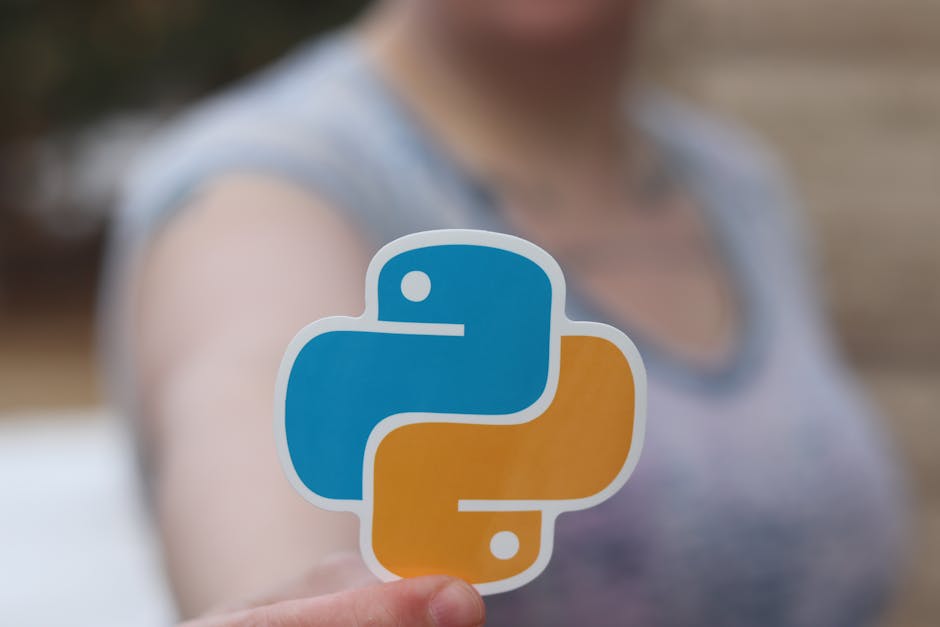Unlock the Hidden Goldmine: How Integrating Public & Private APIs Can Transform Your Data-Driven Content - Related to sustainability,, content, innovation,, community, year
Celebrating a Year of Commitment to CNCF Flux: Sustainability, Innovation, and Growth

In January 2024, Flux faced a funding problem. Its progenitor, WeaveWorks, could no longer support the project or its maintainers. At ControlPlane, we decided to step in. The community’s needs aligned with our development and DevSecOps capabilities, so we employed the core maintainers to continue their essential work supporting Flux’s substantial user base with elements, patches, and implementation.
We ensured the maintainers had the time and focus required to continue development efforts undisturbed and considered monetization strategies for the open source project. At the same time, we decided to create our own enterprise edition of Flux for companies that wanted a fully supported version.
The Risk and Reward of Sustaining Open Source.
The vision and tremendous effort the dedicated Flux team has put into the project are reflected in its adoption: it is the de facto GitOps toolkit for securely and efficiently managing business-critical deployments at scale. Flux is trusted to run everything from spacecraft and planes to telecommunications networks and financial institutions. This project needed to continue, and for that, it needed support.
As a bootstrapped and independent organization, ControlPlane’s commitment required balancing financial risk with a strategic focus of effort.
For us as a business, it would seriously widen our focus. We would go from being a cloud native consultancy that contributes to open source projects to safeguarding Flux’s future as a CNCF project. This was not a decision we made lightly. Sustaining and growing a project of Flux’s caliber required not only bootstrap funding but collaboration from the rest of the business to integrate and support our consulting efforts around developer velocity, DevSecOps, and progressive delivery.
Over the past year, that commitment has fostered renewed confidence and collaboration from the community and individuals. By stewarding Flux at a pivotal moment, ControlPlane preserved its hard-won reputation as a stable and trusted GitOps solution. This has strengthened ControlPlane’s position as a trusted partner for maintaining and securing critical open source infrastructure for systems, aligning with our core consultancy offering.
Ensuring Flux Thrives for Enterprise-Grade Use Cases.
Flux is a CNCF-graduated open source project, and we recognized early on that further support was needed. Enterprises, particularly those in regulated and business-critical industries, require more than great software. They need trusted partners who intimately understand their unique challenges and can deliver solutions that meet stringent security, scalability, and reliability requirements.
ControlPlane has earned that trust through years of consultancy work in some of the world’s most heavily regulated organizations and sectors, including financial services, telecommunications, and government. Those companies demand strict compliance mandates, and fault tolerance is a table stake for their applications, so any open source project must meet those requirements. Our hands-on experience delivering secure, scalable cloud native solutions helped us expand our work around Flux into the specific needs of these domains.
This allowed us to build a sustainable product around the open source project. ControlPlane Enterprise Flux was designed with these customer requirements in mind. It offers enhanced security capabilities, dedicated enterprise support and assurance, and robust new scaling tools tailored to address the challenges of cloud native workloads in regulated industries globally.
For the open source project, we have extended the project’s core functionality with a dedicated Kubernetes operator to run Flux on autopilot mode, managing security and lifecycle across complex hybrid-cluster deployments. The Flux Operator is fully open source under AGPL, and it is bundled under a commercial license in ControlPlane Enterprise for Flux CD.
The Enterprise offering provides the open source CNCF Flux project with a sustainable revenue model that directly funds the maintainers. It continues the open source offering for anybody to consume, and the financial freedom allows our core maintainers to stay focused on upstream development without the pressure of securing funding.
As part of our activity over the past year, we supported the Flux core maintainers in publishing a 2025 roadmap with the CNCF Flux project’s following milestones. As for the Flux Operator and enterprise roadmap, we plan to release our top customer feature requests this year, including ephemeral environments for reviewing pull requests, Kubernetes self-service namespaces, and much more. The project is open to feedback and suggestions.
We also worked with our clients to secure accreditation for Flux and the enterprise product based on this project. This was an intensive process for the team and a valuable one for the project. Going through this exercise with a central international bank showed how the work that we have done has continued the effort to deliver a secure and increasingly vital infrastructure management tool for developers and their organizations. During the past year, those test and review sessions with the bank’s IT team were a baptism of fire, but this hard work was validated, and it delivered improvements that the whole project benefitted from.
We have a few lessons to share for companies considering how they support open source or whether they should take on a project that needs support and guidance. Firstly, supporting maintainers is a critical requirement for the success of any open source project. This means creating a sustainable business alongside a sustainable and valuable project. Secondly, working with large enterprises will mean looking at your project for ways to improve code quality and harden your systems. Far from being a burden, this can show you ways to increase the value your enterprise product can offer. Lastly, thankfully, we were already well versed in it; don’t be afraid to reach out to your community and learn from their experience. This will usually give you far more insights than you might expect and that you can put into place for the years to come.
Editorial note: Percona will be taking part in State of Open Con, a conference covering open source software, open hardware, open source in finance and banking and mobile/telecommunications. The event will be held Feb. 4-5 in London. Alex Williams of The New Stack will also moderate a track on AI Openness at the event. For more information, visit [website]/.
JavaScript is always evolving, with new tools and patterns continually emerging to help developers write advanced, more powerful code. Two game-changing......
In Terraform, comments are lines or sections of code that are ignored during execution but are useful for providing context, explanations, or notes wi......
While implementing infinite scroll functionality using React and MongoDB, I encountered an issue where data was duplicating at paginatio......
Community Over Code Keynotes Stress Open Source's Vital Role

At the ASF's flagship Community Over Code North America conference in October 2024, keynote speakers underscored the vital role of open-source communities in driving innovation, enhancing security, and adapting to new challenges.
By highlighting the Cybersecurity and Infrastructure Security Agency's (CISA) intensified focus on open source security, citing examples of open source-driven innovation, and reflecting on the ASF's 25-year journey, the keynotes showcased a thriving but rapidly changing ecosystem for open source.
Aeva Black from CISA opened the conference with a talk about the government's growing engagement with open source security. Black, a long-time open source contributor who helps shape federal policy, emphasized how deeply embedded open source has become in critical infrastructure.
To help illustrate open source's pervasiveness, Black noted that modern European cars have more than 100 computers, "most of them running open source, including open source orchestration systems to control all of it."
Innovation Showcase: The [website] Project.
Chris Kersey delivered a keynote demonstrating the [website] Project, an augmented-reality helmet system built entirely with open-source software. His presentation illustrated how open source enables individuals to create sophisticated systems by building upon community-maintained ecosystems. Kersey's helmet integrates computer vision, voice recognition, local AI processing, and sensor fusion - all powered by open source.
"Open source is necessary to drive this level of innovation because none of us know all of this technology by ourselves, and by sharing what we know with each other, we can build amazing things," Kersey emphasized while announcing the open-sourcing of the [website] Project.
David Nalley, President of the Apache Software Foundation (ASF), closed the conference with the annual 'State of the Foundation' address, reflecting on the ASF's evolution over 25 years. He highlighted how the foundation has grown from primarily hosting the Apache web server to becoming a trusted home for hundreds of projects that "have literally changed the face of the (open source) ecosystem and set a standard that the rest of the industry is trying to copy."
Nalley emphasized the ASF's critical role in building trust through governance: "When something carries the Apache brand, people know that means there's going to be governance by consensus, project management committees, and people who are acting in their capacity as an individual, not as a representative of some other organization."
Looking ahead, Nalley acknowledged the need for the ASF to adapt to new regulatory requirements like Europe's Cyber Resiliency Act while maintaining its core values. He highlighted ongoing collaboration with other foundations like the Eclipse Foundation to set standards for open-source security compliance.
"There is a lot of new work we need to do. We cannot continue to do the things that we have done for many years in the same way that we did them 25 years ago," Nalley noted while expressing confidence in the foundation's ability to evolve.
This year's Community Over Code keynotes highlighted a maturing open-source ecosystem tackling new challenges around security, regulation, and scalability while showing how community-driven innovation continues to push technical limits. Speakers stressed that the ASF's model of community-led development and strong governance is essential for fostering trust and driving innovation in today's complex technology landscape.
Grzesik: The core question that we wanted to start with is, how is it that some organizations can actually deliver software and do it quit......
The Azure AI Agent Service is Microsoft’s enterprise-grade implementation of AI agents. It empowers developers to build, deploy, and scale sophisticat......
The traditional trade-off for distributed databases with high write speeds was availability for consistency. Version 8 of Aerospike’s performant multi......
Unlock the Hidden Goldmine: How Integrating Public & Private APIs Can Transform Your Data-Driven Content

I still remember the day when our strategy felt incomplete. It felt like we were tediously gathering data from various reports, and our content seemed stale and outdated. Then came the fine day and things changed-we finally came to know just how easy integrating both public and private APIs can be to fetch real-time data. That was when our content strategy flipped from a manual, error-prone process to a dynamic, data-driven powerhouse, engaging our audience and moving the needle in engagement and conversions.
In today’s fast-paced digital landscape, leveraging APIs for data retrieval is no longer a luxury—it’s a necessity. Whether you’re a marketer, developer, or business leader, integrating APIs can help you deliver fresh, actionable insights to your audience. In this post, I’ll share valuable tips and strategies on how to harness the power of APIs for data-driven content, ensuring that your content remains relevant, engaging, and highly effective.
The Power of API Integration for Data-Driven Content APIs, or Application Programming Interfaces, are a way for different software systems to talk to each other. By leveraging the power of both public and private APIs, you can draw real-time data from various insights and merge that information with your proprietary data. This hybrid approach offers several advantages:
Real-Time Updates: Provide your audience with the latest information sans manual interference.
This allows one to combine industry trends from public APIs with their internal metrics for richer, more personalized content. Automation of data retrieval processes leads to gains in efficiency. So, it offers , making your content different from the competition that is limited by static data.
For example, consider that you run a website focusing on financial news. You could include the use of publicly available APIs stock market data vendors supply and internal analysis tools that provide you the power to make dynamic dashboards and interactive charts and write timely articles-all potentially enabling your audience to get that true sense of what the market is experiencing right at that time. This keeps the user involved through positioning of the brand in real-time.
Choose the APIs That Fit Your Needs Find out what sort of APIs will serve your needs. First,.
Public APIs: Public APIs are provided by third-party providers and range from simple data such as on trends, weather, social media, finance, and many others. Examples include Twitter's API for current social trends, Google News for news events, or government databases for economic data.
Private APIs: These would be your organization's own or those of your partners. They provide information that is solely exclusive, such as customer behavior, sales figures, or proprietary market analysis.
Tip: Catalog your content requirements against the publicly available APIs. Take into consideration reliability, refresh cycle, and other integration considerations. The combination of public and private APIs provides all that's necessary to present comprehensive data-driven content.
Prioritize Data Quality and Security Information is only as good as it's accurate and secure. As you integrate the APIs, make sure you.
Use Secure Protocols: Always fetch data over HTTPS to protect sensitive information in transit.
Authenticate Properly: Use secure authentication, such as OAuth or API keys, to ensure that only authorized applications can access the data.
Verify Data Quality: Periodically audit the APIs that you use to ensure they provide accurate, timely, and reliable data. Poor data quality leads to misleading content that will erode audience trust.
: Automate the monitoring of your API integrations so that you can quickly identify and fix data discrepancies or security issues.
Automate Your Data Retrieval Process Manual data collection is both time-consuming and prone to errors. Automation is key to harnessing the full power of APIs:
Scheduling can be done through cron jobs and/or using every kind of task scheduler to get the data in after periods, meaning your content is always up-to-date, fresh with new facts and more.
Cache Data: Cache frequently accessed data to lighten loads on servers, hence increasing content delivery speed.
Middleware or Integration Platforms: Also, make use of middleware/integration platforms, such as Zapier or Integromat, which simplify your development with ease in many API integrations.
Tip: Take full advantage of the cloud for seamless volume data handling. It will not only raise the stakes but also will enable you to scale your content strategy with audience growth.
Making Data More Interesting Too much raw data is overpowering; hence, the need to present the data in forms that are both engaging and easy to use:
Interactivity through Visualizations: Utilize [website], [website], or Tableau to present the data through charts, graphs, and even dashboards dynamically. Visualized information is far easier to make sense of. Personalization: Mash up publicly available data with more private proprietary data to present customized content targeted for your audience's interests. Demographic information coming from open APIs can be put together with insight into customer information to build unique recommendations or analysis.
Storytelling: Do not just state facts; tell a story with your data. With the use of narrative techniques, explain trends, highlight anomalies, and set context. This will help your audience connect with your data on a deeper level.
Tip: Always pilot-test your content with a small segment of your audience before launching on a full scale. Gather feedback and iterate to make sure your data-driven content resonates well.
Integration of public and private APIs for data-driven content is a game-changer. It turns static, stale content into a living, breathing real-time resource that resonates with your audience and drives business outcomes. Choosing the right APIs, ensuring the quality and security of data, automating your data pulling, and turning raw data into compelling stories-all these can uncover a hidden goldmine of insights that will drive your content strategy forward.
Integrate today and unlock powerful real-time-driven content, driven by real and timely data. Which of these API integrations has given the most to your business? Why not comment on your experience along with valuable advice? Share insights and expertise regarding API below-we can all benefit from them:
When working with MySQL in your Java applications, there are several layers at which you can optimize performance. In this post, I’ll cover key areas—......
Most of the time Copilot is just reading my mind and i only need to press TAB a couple of times.
BUT there are other times where it is like.
Key Takeaways GenAI can enhance employee productivity while safeguarding data security with data redaction and locally-hosted models.
Market Impact Analysis
Market Growth Trend
| 2018 | 2019 | 2020 | 2021 | 2022 | 2023 | 2024 |
|---|---|---|---|---|---|---|
| 7.5% | 9.0% | 9.4% | 10.5% | 11.0% | 11.4% | 11.5% |
Quarterly Growth Rate
| Q1 2024 | Q2 2024 | Q3 2024 | Q4 2024 |
|---|---|---|---|
| 10.8% | 11.1% | 11.3% | 11.5% |
Market Segments and Growth Drivers
| Segment | Market Share | Growth Rate |
|---|---|---|
| Enterprise Software | 38% | 10.8% |
| Cloud Services | 31% | 17.5% |
| Developer Tools | 14% | 9.3% |
| Security Software | 12% | 13.2% |
| Other Software | 5% | 7.5% |
Technology Maturity Curve
Different technologies within the ecosystem are at varying stages of maturity:
Competitive Landscape Analysis
| Company | Market Share |
|---|---|
| Microsoft | 22.6% |
| Oracle | 14.8% |
| SAP | 12.5% |
| Salesforce | 9.7% |
| Adobe | 8.3% |
Future Outlook and Predictions
The Celebrating Year Commitment landscape is evolving rapidly, driven by technological advancements, changing threat vectors, and shifting business requirements. Based on current trends and expert analyses, we can anticipate several significant developments across different time horizons:
Year-by-Year Technology Evolution
Based on current trajectory and expert analyses, we can project the following development timeline:
Technology Maturity Curve
Different technologies within the ecosystem are at varying stages of maturity, influencing adoption timelines and investment priorities:
Innovation Trigger
- Generative AI for specialized domains
- Blockchain for supply chain verification
Peak of Inflated Expectations
- Digital twins for business processes
- Quantum-resistant cryptography
Trough of Disillusionment
- Consumer AR/VR applications
- General-purpose blockchain
Slope of Enlightenment
- AI-driven analytics
- Edge computing
Plateau of Productivity
- Cloud infrastructure
- Mobile applications
Technology Evolution Timeline
- Technology adoption accelerating across industries
- digital transformation initiatives becoming mainstream
- Significant transformation of business processes through advanced technologies
- new digital business models emerging
- Fundamental shifts in how technology integrates with business and society
- emergence of new technology paradigms
Expert Perspectives
Leading experts in the software dev sector provide diverse perspectives on how the landscape will evolve over the coming years:
"Technology transformation will continue to accelerate, creating both challenges and opportunities."
— Industry Expert
"Organizations must balance innovation with practical implementation to achieve meaningful results."
— Technology Analyst
"The most successful adopters will focus on business outcomes rather than technology for its own sake."
— Research Director
Areas of Expert Consensus
- Acceleration of Innovation: The pace of technological evolution will continue to increase
- Practical Integration: Focus will shift from proof-of-concept to operational deployment
- Human-Technology Partnership: Most effective implementations will optimize human-machine collaboration
- Regulatory Influence: Regulatory frameworks will increasingly shape technology development
Short-Term Outlook (1-2 Years)
In the immediate future, organizations will focus on implementing and optimizing currently available technologies to address pressing software dev challenges:
- Technology adoption accelerating across industries
- digital transformation initiatives becoming mainstream
These developments will be characterized by incremental improvements to existing frameworks rather than revolutionary changes, with emphasis on practical deployment and measurable outcomes.
Mid-Term Outlook (3-5 Years)
As technologies mature and organizations adapt, more substantial transformations will emerge in how security is approached and implemented:
- Significant transformation of business processes through advanced technologies
- new digital business models emerging
This period will see significant changes in security architecture and operational models, with increasing automation and integration between previously siloed security functions. Organizations will shift from reactive to proactive security postures.
Long-Term Outlook (5+ Years)
Looking further ahead, more fundamental shifts will reshape how cybersecurity is conceptualized and implemented across digital ecosystems:
- Fundamental shifts in how technology integrates with business and society
- emergence of new technology paradigms
These long-term developments will likely require significant technical breakthroughs, new regulatory frameworks, and evolution in how organizations approach security as a fundamental business function rather than a technical discipline.
Key Risk Factors and Uncertainties
Several critical factors could significantly impact the trajectory of software dev evolution:
Organizations should monitor these factors closely and develop contingency strategies to mitigate potential negative impacts on technology implementation timelines.
Alternative Future Scenarios
The evolution of technology can follow different paths depending on various factors including regulatory developments, investment trends, technological breakthroughs, and market adoption. We analyze three potential scenarios:
Optimistic Scenario
Rapid adoption of advanced technologies with significant business impact
Key Drivers: Supportive regulatory environment, significant research breakthroughs, strong market incentives, and rapid user adoption.
Probability: 25-30%
Base Case Scenario
Measured implementation with incremental improvements
Key Drivers: Balanced regulatory approach, steady technological progress, and selective implementation based on clear ROI.
Probability: 50-60%
Conservative Scenario
Technical and organizational barriers limiting effective adoption
Key Drivers: Restrictive regulations, technical limitations, implementation challenges, and risk-averse organizational cultures.
Probability: 15-20%
Scenario Comparison Matrix
| Factor | Optimistic | Base Case | Conservative |
|---|---|---|---|
| Implementation Timeline | Accelerated | Steady | Delayed |
| Market Adoption | Widespread | Selective | Limited |
| Technology Evolution | Rapid | Progressive | Incremental |
| Regulatory Environment | Supportive | Balanced | Restrictive |
| Business Impact | Transformative | Significant | Modest |
Transformational Impact
Technology becoming increasingly embedded in all aspects of business operations. This evolution will necessitate significant changes in organizational structures, talent development, and strategic planning processes.
The convergence of multiple technological trends—including artificial intelligence, quantum computing, and ubiquitous connectivity—will create both unprecedented security challenges and innovative defensive capabilities.
Implementation Challenges
Technical complexity and organizational readiness remain key challenges. Organizations will need to develop comprehensive change management strategies to successfully navigate these transitions.
Regulatory uncertainty, particularly around emerging technologies like AI in security applications, will require flexible security architectures that can adapt to evolving compliance requirements.
Key Innovations to Watch
Artificial intelligence, distributed systems, and automation technologies leading innovation. Organizations should monitor these developments closely to maintain competitive advantages and effective security postures.
Strategic investments in research partnerships, technology pilots, and talent development will position forward-thinking organizations to leverage these innovations early in their development cycle.
Technical Glossary
Key technical terms and definitions to help understand the technologies discussed in this article.
Understanding the following technical concepts is essential for grasping the full implications of the security threats and defensive measures discussed in this article. These definitions provide context for both technical and non-technical readers.
scalability intermediate
DevSecOps intermediate
Kubernetes intermediate
framework intermediate
middleware intermediate
interface intermediate
API beginner
 How APIs enable communication between different software systems
How APIs enable communication between different software systems
